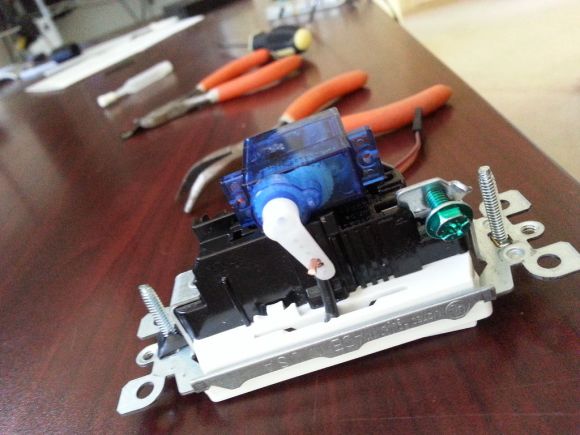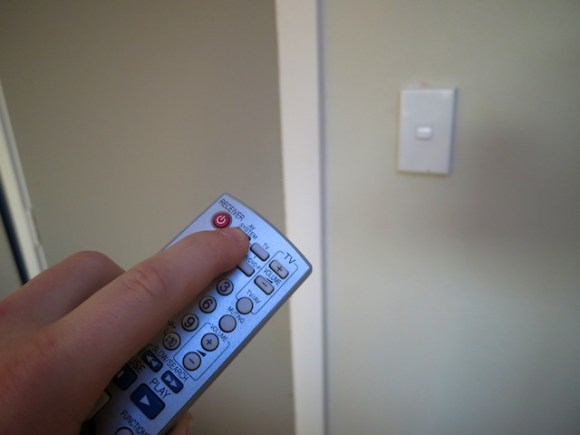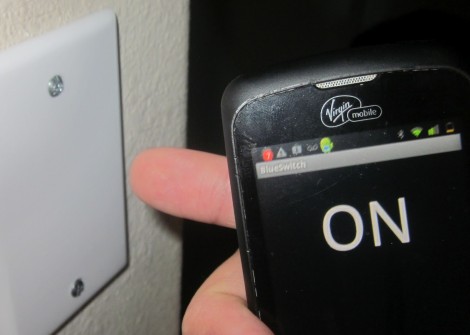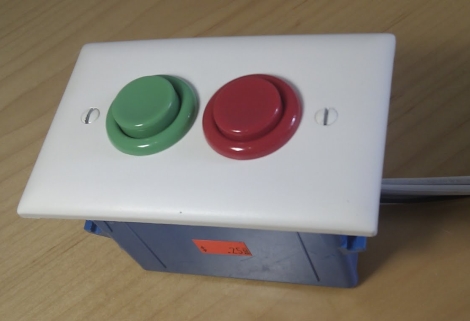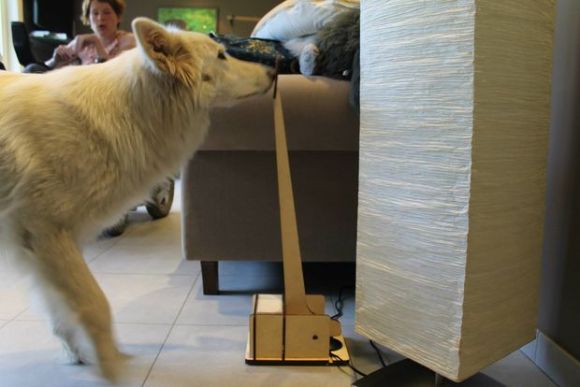
We love hacks that make a difference in people’s lives. Service dogs can make a huge difference in a physically disabled person’s life, and while they can do a lot of things, dogs aren’t the greatest at flipping light switches. So a team of industrial design students from Ghent, Belgium decided to try finding a solution.
Their case study was for a young woman named [Heleen Bartsoen]. She has a very smart white golden retriever named [Gyproc] who is very good at picking up commands, and is a very careful and cautious service dog. She has an IKEA lamp with a foot switch that neither she or her dog can press.
The team quickly got to work and decided to design a lever to give the dog (or Heleen!) some mechanical advantage to actuate the switch. Having access to a laser cutter, they designed the lever to be cut out of plywood for easy assembly. It pivots around a wooden dowel, and they’ve filled a compartment of the base with cement to keep it stationary when being used.
Continue reading “A Levered Light Switch Even Fido Can Operate”

